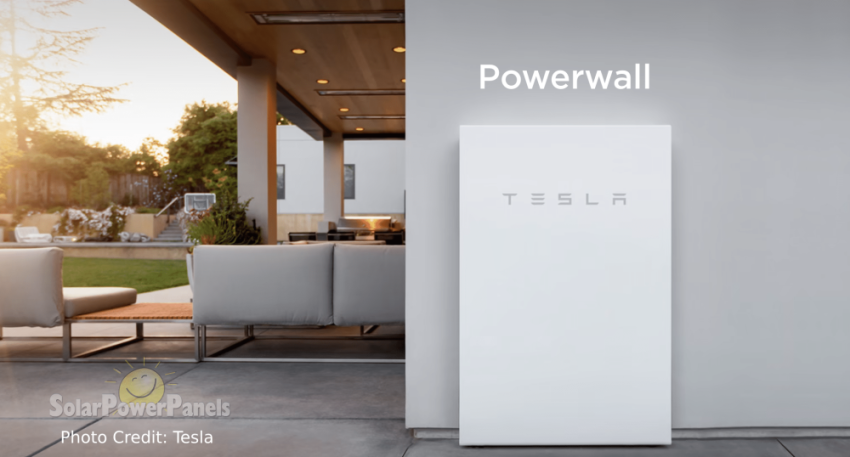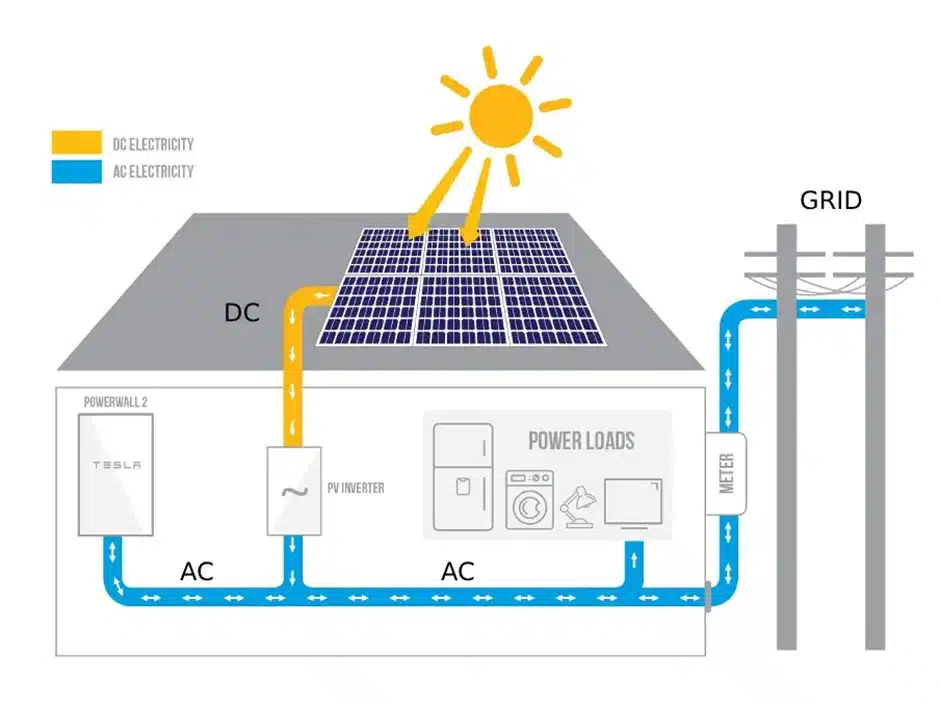From Powerwall 2 to Powerwall 3: Exploring Tesla's Energy Storage for Australia

Tesla has pioneered the energy storage industry, and its Powerwall systems have transformed how households consume and store electricity. From the Powerwall 2 to the highly anticipated Powerwall 3, Tesla's progression in energy storage for Australia has been extraordinary. This article will look into Tesla's advancements and how it has impacted the Australian market. With growing concerns about climate change and the need for sustainable energy solutions, Tesla's Powerwall systems have garnered immense attention. The Powerwall 2, with its sleek design and enhanced storage capacity, allowed homeowners to tap into their solar energy during peak hours or a blackout. It revolutionized how we harness and utilize renewable energy, ensuring household energy independence.
As we eagerly await the release of the Powerwall 3, speculation is rife regarding its potential features and improvements. We can expect even greater efficiency, storage capacity, and integration capabilities with Tesla's commitment to innovation and continuous progress. The Powerwall 3 could push the boundaries of energy storage and further establish Tesla as a leader in the market.
Stay tuned as we explore Tesla's journey in energy storage and the significant impact its Powerwall systems have had on Australia's transition to a more sustainable future.
Overview of Powerwall 2
The Powerwall 2, introduced by Tesla in 2016, marked a significant milestone in energy storage technology. This sleek and compact system doubled the energy capacity of its predecessor, allowing homeowners to store even more solar energy. With an ample storage of 13.5 kWh, the Powerwall 2 became a game-changer in the industry. The Powerwall 2 provided ample energy storage and featured advanced capabilities such as time-based control and remote monitoring. Homeowners could optimise their energy usage by setting specific times for charging and discharging the Powerwall. This allowed them to take advantage of lower energy rates during off-peak hours and maximise their savings.
Upgrades and improvements in Powerwall 3
We expect the Tesla Powerwall 3 to arrive in Australia by the end of 2024. Initially, Powerwall 3 is not designed for compatibility with existing solar systems, commonly known as an AC retrofit. Rather, it is intended to be utilised in conjunction with a new solar installation, with both the Powerwall 3 and solar panels being installed simultaneously. Tesla has always been committed to pushing the boundaries of technology, and the Powerwall 3 is to be no different. Rumours suggest that the Powerwall 3 will have an even higher storage capacity, allowing homeowners to store more energy for their daily needs. Additionally, improved integration capabilities enable seamless integration with solar panels and other renewable energy sources.
Features and capabilities of Powerwall 3
While specific details about the Powerwall 3 are yet to be released, we can expect a range of exciting features and capabilities based on Tesla's track record. The Powerwall 3 is expected to have advanced energy management software to optimise energy usage and storage based on individual needs and preferences. Furthermore, the Powerwall 3 will likely enhance durability and efficiency, ensuring long-lasting performance and maximum energy conversion. Tesla's continuous focus on innovation and research ensures that each new iteration of the Powerwall system surpasses its predecessor in terms of reliability and performance

How Tesla's Powerwall Works?
How Tesla Powerwall works?
The Tesla Powerwall operates seamlessly with existing solar panel systems. When solar panels generate electricity, the excess power flows into the Powerwall instead of being fed back into the grid. The Powerwall then stores this excess energy in its lithium-ion battery for later use. When the solar panels are not generating enough power (such as during the night or on cloudy days), the Powerwall releases the stored energy back into the home, providing a continuous supply of electricity.
The Powerwall is equipped with advanced software to assist homeowners to monitor their energy usage in real-time. This user-friendly interface provides an understanding of your energy consumption patterns, allowing homeowners to make informed decisions about their energy usage. Additionally, the Powerwall can be connected to the internet, enabling remote monitoring and control through a smartphone app. This level of accessibility and control empowers homeowners to optimise their energy consumption and make the most of their renewable energy system.
Cost and installation process of Tesla Powerwall in Australia
The cost of a Tesla Powerwall 2 in Australia typically includes the unit itself, associated hardware, and installation fees. In 2023, the cost for a single Powerwall unit was around AUD $12,000 to $15,000, but this can vary. It's essential to consider additional costs like inverter upgrades or other electrical work that may be needed. The cost of installing a Tesla Powerwall in Australia depends on factors like the size of the system, location, and additional installation requirements. While the initial investment may seem significant, collecting, and utilising solar energy can eventually save on electricity bills.
The installation process of a Powerwall typically involves a consultation with a Tesla-certified installer, who will assess the property's suitability and provide recommendations for the system size and placement. Once the installation plan is available, the installer will proceed with the necessary electrical work and mounting of the Powerwall. The entire process is usually complete within a few days, and homeowners can start enjoying the benefits of the Powerwall immediately.
The impact of Tesla Powerwall on the electricity grid in Australia
The growing adoption of Tesla Powerwall systems in Australia significantly impacts the electricity grid. By collecting and storing excess solar energy and reducing the need for grid power during peak demand periods, the Powerwall helps alleviate strain on the grid infrastructure. This not only improves the overall stability of the electrical system but also reduces the risk of losing you during periods of high electricity demand.
Additionally, the Powerwall contributes to the decentralisation of the electricity grid. As more households generate and store their energy, the reliance on large-scale power plants diminishes. This shift towards distributed energy systems promotes energy independence and resilience, making the electricity grid more robust and adaptable to future challenges.
Government incentives and rebates for Tesla Powerwall in Australia
The Australian government recognises the importance of renewable energy and offers various incentives and rebates to encourage the installation of Tesla Powerwall systems.
One such incentive is the Small-scale Technology Certificates (STCs) scheme, which financially supports households that install energy systems, like solar panels and Powerwalls. The number of STCs received depends on factors such as the system's capacity and the installation's location. These STCs can be sold or traded, providing homeowners with an additional source of income.
Furthermore, some states and territories in Australia offer specific rebates and grants for renewable energy systems, including the Powerwall. The incentives vary depending on the region and are designed to reduce further the upfront costs associated with installing a Powerwall.
Case studies of successful Tesla Powerwall installations
Numerous homeowners in Australia have already embraced the Tesla Powerwall and experienced the advantages it offers. One such example is the Smith family from Melbourne, who installed a Powerwall alongside their existing solar panel system. With the Powerwall, they reduced their reliance on the grid by 90%, resulting in significant savings on their electricity bills. Additionally, during a recent blackout, the Powerwall provided uninterrupted power to their home, ensuring their essential appliances remained functional.
Another success story comes from Brisbane, where the Johnsons installed multiple Powerwalls to power their home and electric vehicles. Utilising the stored energy from the Powerwalls, they could charge their electric vehicle without drawing power from the grid if they decided to have one. The Powerwall also allowed them to take advantage of off-peak electricity rates, resulting in substantial savings on their energy bills.
Conclusion
Tesla's Powerwall systems have been instrumental in transforming the energy storage landscape in Australia. From the Powerwall 2 to the highly anticipated Powerwall 3, Tesla's commitment to innovation and continuous progress has revolutionised how households consume and store electricity. With the Powerwall 3 on the horizon, homeowners can expect even greater efficiency, storage capacity, and integration capabilities. Tesla's energy storage journey has significantly impacted Australia's transition to a more sustainable future, and the Powerwall 3 is expected to accelerate this transition further. As we eagerly await the release of the Powerwall 3, Tesla’s advancements in energy storage technology have set a new standard for the industry. With each iteration of the Powerwall system, Tesla reinforces its position as a leader in energy storage, driving us closer to a greener and more sustainable future.
